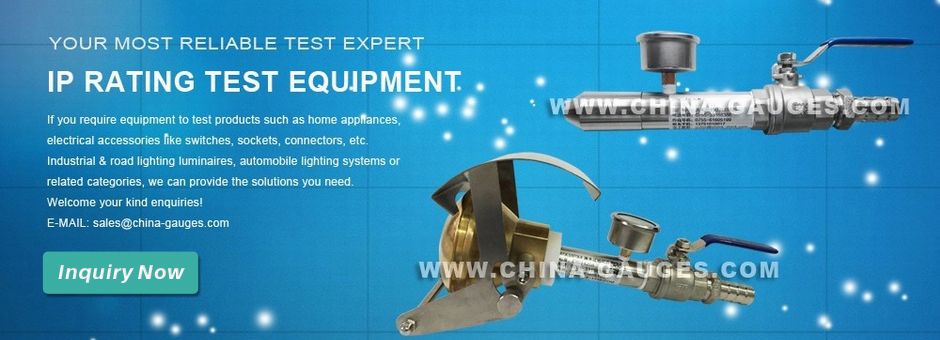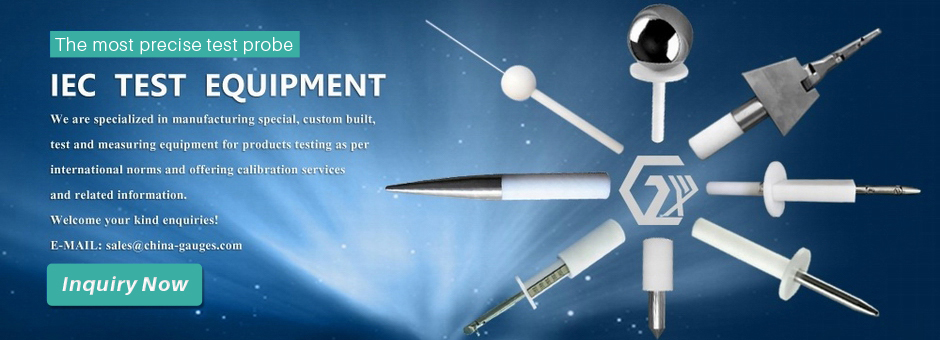contact us
products
- Main Products
technical articles
Company News
INTRODUCTION
The trend in weigh scales towards higher accuracy and lower cost has produced an increased demand for high-performance analog signal processing at low cost. The scope of this requirement is not obvious; most weigh scales output the final weight value at a resolution of 1:3,000 or 1:10,000, which is easily met (apparently) by a 12-bit to 14-bit ADC (analog-to-digital converter). However, a closer examination of weigh scales shows that meeting the resolution requirement is not that easily accomplished; in fact, the ADC accuracy needs to be closer to 20 bits. In this article, we discuss some of the system specifications of weigh scales and deal with considerations for designing and building a weigh-scale system. The main areas considered are peak-to-peak-noise resolution, A/D-converter dynamic range, gain drift, and filtering. We compare measured data from a real load cell to inputs from a stable voltage reference, using a weigh-scale reference design as an evaluation board.
Load-Cell Sensor
The most common weigh-scale implementation is to use a bridge-type load-cell sensor, with voltage output directly proportional to the weight placed on it. A typical load-cell bridge is illustrated in Figure 1; it is a 4-resistor bridge circuit with at least two variable arms, where the resistance change with weight applied creates a differential voltage at a common-mode level of 2.5 V (one-half the supply voltage). A typical bridge will have resistors of the order of 300 ohms.

Figure 1. Basic circuit of load cell.
The load cell is inherently monotonic. The main parameters of the load cell aresensitivity, total error, and drift.
Sensitivity
A typical load cell’s electrical sensitivity, defined as the ratio of the full-load output to the excitation voltage, is 2 mV/V. With 2-mV/V sensitivity and 5-V excitation, the full-scale output voltage is 10 mV. Often, in order to use the most linear portion of the load cell’s span, only about two-thirds of this range would be used. The full scale output voltage would thus be about 6 mV. The challenge thus posed is to measure small signal changes within this
Total Error
The total error is the ratio of the output error to the rated output. A typical weigh scale has a total error specification of about 0.02%. It is a very important specification, because it limits the accuracy that could be reached with an ideal signal conditioning circuit. It thus determines the choice of A/D-converter resolution, as well as the design of the amplification circuit and filter.
Drift
Load cells also drift over time. Figure 2 shows an actual load-cell drift characteristic, measured over a 24-hour period. Temperature was essentially constant during the measurement period, so the drift is not temperature-related. The result shown (number of bits change, measured using a 24-bit ADC), shows a total drift of 125 LSBs, or about 7.5 ppm.

Figure 2. Long-term load-cell stability—24-hour plot.
Weigh-Scale System
The most important parameters to consider when designing a weigh-scale system areinternal count, ADC dynamic range, noise-free resolution, update rate, system gain, and gain-error drift. The system must be designed to be ratiometric, hence independent of supply voltage—this will be discussed later .
Internal Count
As mentioned, the resolutions of typical weigh-scale systems, as seen by the user, range from a count of 1:3,000 at the low end up to 1:10,000 for high-end solutions. For example, a weigh scale that can measure up to 5 kilograms with a count of 1:10,000 has a weight resolution of 0.5 grams. This resolution, as seen on the LCD display, is generally referred to as the external count. In order to guarantee that this resolution is met accurately, the internal resolution of the system must be better by at least an order of magnitude. In fact, some standards dictate that the internal count of the system be a factor of 20 times better than that of the external count. For the example above, the internal count would need to be 1:200,000.

Figure 3. Typical weigh-scale system.
ADC Dynamic Range
In weigh-scale applications using standard high-resolution A/D converters, the entire full-scale range of the ADC is unlikely to be used. In the example of Figure 1, the load cell has a 5-V supply and a full-scale output of 10 mV. The linear range is 6 mV. Using a gain-of-128 stage on the front end, the ADC input will see about 768 mV full-scale. If a standard 2.5-V reference is used, only 30% of the ADC’s dynamic range is used.
If the internal count needs to be 1:200,000 accurate for the full-scale range of 770 mV, the ADC therefore needs to be of the order of 3× to 4× better in order to meet the performance requirements. In this case, for a count of 1:800,000, the ADC would require 19 bits to 20 bits of accuracy. The practical challenge posed by the signal-processing requirement can now be understood.
Gain and Offset Drift
Industrial weigh-scale systems typically operate over a 50-degree (Celsius) temperature range. Designers must consider the accuracy of the system at temperatures beyond room temperature, since gain drift with temperature can be a dominant source of error. For example, a 20-bit stable system with a 1-ppm/°C gain-error drift will have 50 LSBs of error over a 50-degree range. Even though the system may be 1-LSB stable at 25°C, it is in effect only 50-LSBs accurate over the full temperature range. Choosing an ADC with low gain drift is thus a very important consideration when designing weigh scales.
Offset drift is not as big a consideration. Most sigma-delta ADCs are designed with inherent chopping-mode techniques, which give the advantage of lower drift and better immunity to 1/f noise—useful features for weigh-scale designers. For example, theAD7799 A/D converter has an offset drift specification of 10 nV/°C. In a 20-bit system, this would contribute a total of only 1/4-LSB error over the full 50-degree operating range.
Noise-Free Resolution
One common mistake when reading data sheets is lack of attention as to whether noise is specified as root mean square (rms) or peak-to-peak (p-p). For weigh-scale applications, the most important specification is p-p noise, which determines noise-free-code resolution. The noise-free-code resolution of an ADC is the number of bits of resolution beyond which it is impossible to distinctly resolve individual codes due to the effective input noise—associated with all ADCs. This noise can be expressed as an rms quantity, often as a number of LSB units (counts, 2–n of full scale). Multiplying by 6.6 (to capture 99.9% of all values in a standard distribution) provides a reasonable equivalent peak-to-peak value (expressed in LSBs). Data sheets for most Analog Devices sigma-delta ADCs specify both the rms- and the p-p, or noise-free, codes, as shown in the table below, excerpted from the AD7799 data sheet.
Update Rate
In Figure 4, it can be seen that the noise-free resolution of the system depends on the update rate of the ADC. For example, using a 2.5-V reference and an update rate of 4.17 Hz, the resolution is 20.5 bits p-p (gain of 128); whereas at 500 Hz, the resolution decreases to 16.5 bits. In weigh-scale systems, the designer needs to balance the lowest update rate at which the ADC can be sampled with the output data rate needed to update the LCD display. For high-end weigh scales, a 10-Hz ADC update rate is generally used.
Table I. Output RMS Noise (mV) vs. Gain and Output Update Rate for the AD7799
Using a 2.5 V Reference
|
Update Rate
|
Gain of 1
|
Gain of 2
|
Gain of 4
|
Gain of 8
|
Gain of 16
|
Gain of 32
|
Gain of 64
|
Gain of 128
|
|---|---|---|---|---|---|---|---|---|
|
4.17 Hz
|
0.64
|
0.6
|
0.185
|
0.097
|
0.075
|
0.035
|
0.027
|
0.027
|
|
8.33 Hz
|
10.4
|
0.96
|
0.269
|
0.165
|
0.108
|
0.048
|
0.037
|
0.040
|
|
16.7 Hz
|
1.55
|
1.45
|
0.433
|
0.258
|
0.176
|
0.085
|
0.065
|
0.065
|
|
33.3 Hz
|
2.3
|
2.13
|
0.647
|
0.364
|
0.24
|
0.118
|
0.097
|
0.094
|
|
62.5 Hz
|
2.95
|
2.85
|
0.952
|
0.586
|
0.361
|
0.178
|
0.133
|
0.134
|
|
125 Hz
|
4.89
|
4.74
|
1.356
|
0.785
|
0.521
|
0.265
|
0.192
|
0.192
|
|
250 Hz
|
11.76
|
9.5
|
3.797
|
2.054
|
1.027
|
0.476
|
0.326
|
0.308
|
|
500 Hz
|
11.33
|
9.44
|
3.132
|
1.773
|
1.107
|
0.5
|
0.413
|
0.374
|
Table II. Typical Resolution (Bits) vs. Gain and Output Update Rate for the AD7799
Using a 2.5 V Reference
|
Update Rate
|
Gain of 1
|
Gain of 2
|
Gain of 4
|
Gain of 8
|
Gain of 16
|
Gain of 32
|
Gain of 64
|
Gain of 128
|
|
4.17 Hz
|
23 (20.5)
|
22 (19.5)
|
22.5 (20)
|
22.5 (20)
|
22 (19.5)
|
22 (19.5)
|
21.5 (19)
|
20.5 (18)
|
|
8.33 Hz
|
22 (19.5)
|
21.5 (19)
|
22 (19.5)
|
22 (19.5)
|
21.5 (19)
|
21.5 (19)
|
21 (18.5)
|
20 (17.5)
|
|
16.7 Hz
|
21.5 (19)
|
20.5 (18)
|
21.5 (19)
|
21 (18.5)
|
21 (18.5)
|
21 (18.5)
|
20 (17.5)
|
19 (16.5)
|
|
33.3 Hz
|
21 (18.5)
|
20 (17.5)
|
21 (18.5)
|
20.5 (18)
|
20.5 (18)
|
20.5 (18)
|
19.5 (17)
|
18.5 (16)
|
|
62.5 Hz
|
20.5 (18)
|
19.5 (17)
|
20.5 (18)
|
20 (17.5)
|
19.5 (17)
|
19.5 (17)
|
19 (16.5)
|
18 (15.5)
|
|
125 Hz
|
20 (17.5)
|
19 (16.5)
|
20 (17.5)
|
19.5 (17)
|
19 (16.5)
|
19 (16.5)
|
18.5 (16)
|
17.5 (15)
|
|
250 Hz
|
18.5 (16)
|
18 (15.5)
|
18.5 (16)
|
18 (15.5)
|
18 (15.5)
|
18.5 (16)
|
18 (15.5)
|
17 (14.5)
|
|
500 Hz
|
18.5 (16)
|
18 (15.5)
|
18.5 (16)
|
18.5 (16)
|
18 (15.5)
|
18.5 (16)
|
17.5 (15)
|
16.5 (14)
|
Figure 4. Equivalent input noise and resolution of the AD7799 A/D converter.
Weigh-Scale Reference Design
Choosing the Best ADC
The best ADC architecture to use for weigh-scale applications is sigma-delta, due to its low noise and its high linearity at low update rates. A further benefit is that noise shaping and digital filtering are implemented on-chip. The integration in the high-frequency modulator shapes the quantization noise so that the noise is pushed toward one half of the modulator frequency. The digital filter then band-limits the response to a significantly lower frequency. This greatly reduces the need for complex post-processing of the ADC data by the user.
The ADC should also contain a low-noise programmable-gain amplifier (PGA) with high internal gain to magnify the small output signal from the load cell. An integrated PGA can be optimized to give low temperature drift, as compared to a discrete amplifier with external gain resistors. With a discrete configuration, any errors due to temperature drift will get amplified through the gain stage. The AD7799, specifically designed for weigh-scale applications, has an excellent noise specification (27 nV/rt-Hz) and a front-end gain stage with a maximum gain of 128 mV/mV. The load cell can be directly interfaced to this ADC.
Figure 5 is a block diagram of a reference design, a weigh-scale system evaluation board designed at Analog Devices. It consists of an AD7799 ADC, controlled by anADuC847 microcontroller. Besides providing the digital interface to the AD7799 and implementing the post processing, the ADuC847 microcontroller itself also contains a 24-bit, high-performance sigma-delta ADC. This will allow users to compare test results between a system containing the AD7799 ADC, and a completely self-contained system using the ADuC847 ADC, with the same hardware connections, so as to choose a design that best meets the requirements.

Figure 5. Reference-design block diagram.
Test Results
The following plots show some test results using the weigh-scale reference design. All results are based on the standard deviation of the measured ADC output codes, effectively the rms noise. To convert to “noise-free-resolution codes” we use the following calculation:
Standard deviation = rms noise (LSBs)
Peak-to-peak noise = 6.6 × rms noise (LSBs)
Noise in bits of resolution = log2 (p-p noise)
ADC noise-free resolution (bits) = 24 – (noise in bits)
= 24 – log2 (6.6 × rms noise (LSBs)) bits of resolution

Figure 6. AD7799 noise performance at: gain = 64, update rate = 4.17 Hz, reference = 5 V, inputs shorted to the reference. RMS noise = 3.2526 LSBs, p-p resolution = 19.576 bits.

Figure 7. AD7799 noise performance at: gain = 64, update rate = 4.17 Hz, reference = 5 V, load-cell input. RMS noise = 3.6782 LSBs, p-p resolution = 19.399 bits.
Improving the ADC Result
The low-bandwidth, high-resolution AD7799 has a resolution of 24 bits. However, as shown above, the effective number of bits is limited by noise, depending on the output word rate and the gain setting used. In order to increase the effective resolution and remove as much noise as possible, the ADuC847’s microcontroller was programmed to employ an averaging algorithm to get better performance. Figure 8 shows a typical histogram obtained from a sigma-delta ADC when the analog input is grounded. Ideally, for this fixed dc analog input, the output code should be constant. However, due to noise, there will be a spread of codes around the constant analog input value. This noise is due to thermal noise within the ADC and quantization noise inherent in the analog-to-digital conversion process. The code spread is generally Gaussian in nature.

Figure 8. Histogram for an ADC measuring a constant analog input.
An averaging filter is a good way to reduce random white noise while keeping the sharpest step response. The software for the design discussed here uses a moving-averaging algorithm. Figure 9 shows the basic algorithm flow.

Figure 9. Averaging algorithm.
A moving-average filter averages a number of points from the input signal to produce each point in the output signal. The input to the filter is taken directly from the ADC. Operating on the most recent M data points, the smallest and the largest data points (the outliers) are deleted from the data window. The remaining M – 2 points are averaged, as shown in the equation.

Using the moving-average technique, the output data rate remains the same as the input data rate. This is first-order averaging. For higher update rates, second-order averaging is generally used to reduce the waveform dispersion. In that case, the output from the first stage is averaged through a second stage to further improve results.
Figure 10 shows the measured data from the AD7799 after averaging. Comparing this to Figure 5: after averaging there is an improvement of about 2.3 bits in the final result (21.9-bit vs. 19.6-bit effective resolution). This technique can dramatically improve the final result, with no effect on LCD-output update rate. The only disadvantage of this technique is a longer settling time due to the pipeline delay of the averaging.

Figure 10. AD7799 noise performance after filtering at: gain = 64, update rate = 4.17 Hz, reference = 5 V, load-cell input. RMS noise = 0.611 LSBs, p-p resolution = 21.9 bits.
Improving the Response Time to Weight Changes
The basic algorithm can improve the noise performance, but it has a problem when the weight is changed. After a weight change, the output of the load cell should move to another balanced state in a very short time. According to the algorithm, the output of the filter can only indicate the most correct result after the filter refreshes M times. The response time is limited by the number of averaging points. A specific algorithm is needed to judge the change of the weight. Figure 11 shows the basic flow of this algorithm.

Figure 11. Weight-change judgment algorithm.
First, doubled judging steps are used in order to avoid taking a glitch as a weight change. When the differences between two continuous data points from the ADC and the output of the filter both exceed the threshold, this is considered as a weight change.
All M points of the second stage will be filled with the same new data in order to skip the transition period of the load cell very quickly after weight change. Also, the load cell i













